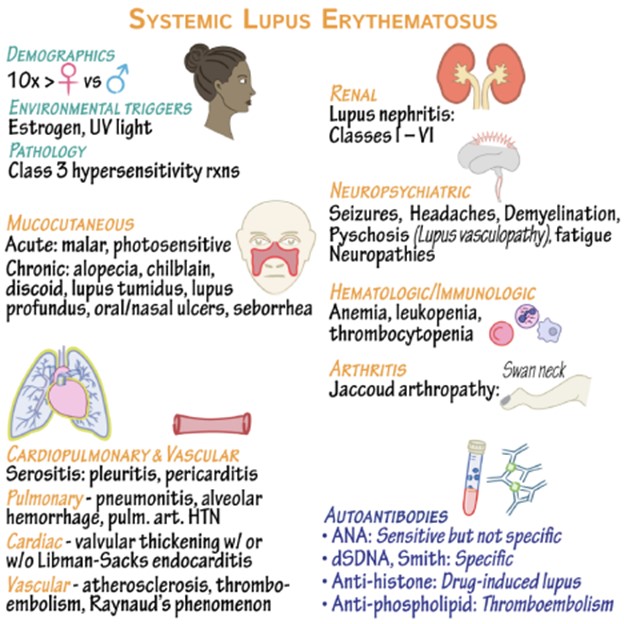A 74-year-old female older adult was admitted to the ER with Shortness of breath, lethargy, and dry oral mucosa. The patient reports being thirsty, and no complaints of pain are noted. BP is 90/50, HR 122, temperature 100, and pulse ox is 94%. The patient is started on IV therapy and has been diagnosed with Dehydration. Her height is 5 Feet, 3 inches and her current weight is 98 pounds. Dark scanty urine present, NKDA or NKFA and has a history of gout, falls, and loss of appetite.
After reviewing the patient's information, identify all pertinent assessment data that is important and of immediate concern.
Select all that apply.
Weight 98Lbs
Dehydrated
Admitted to the ER
Lethargy
HR 122
Shortness of Breath
Temperature 100
Thirsty
Female
BP 90/50
Correct Answer : A,B,D,E,F,G,H,J
● Weight 98 lbs: This information helps determine the patient's baseline weight and assess for potential weight loss associated with dehydration.
● Dehydrated: The diagnosis of dehydration indicates a critical condition that requires immediate attention and intervention.
● Lethargy: Lethargy suggests a decreased level of consciousness and could indicate a severe state of dehydration or other underlying issues that need to be addressed promptly.
● HR 122: A heart rate of 122 beats per minute is elevated and may indicate compensatory mechanisms in response to dehydration or other underlying conditions. It requires further evaluation and intervention.
● Shortness of Breath: This symptom suggests respiratory distress and may be related to the patient's dehydration or underlying conditions. It requires immediate assessment and intervention.
● Temperature 100: An elevated temperature may indicate an underlying infection or inflammatory response. It requires further evaluation to determine the cause and guide appropriate treatment.
● Thirsty: The patient's report of feeling thirsty is an important symptom indicating dehydration and the need for fluid replacement.
● BP 90/50: A blood pressure of 90/50 is low and may be indicative of hypotension, which can occur in dehydration. It requires close monitoring and intervention to stabilize the patient's blood pressure.
The following items are not immediate concerns based on the given information: ● Admitted to the ER: While it is important information, it is not a current concern as the patient is already in the ER.
● Female: The patient's gender is not an immediate concern for the assessment and management of dehydration.
Nursing Test Bank
Naxlex Comprehensive Predictor Exams
Related Questions
Correct Answer is C
Explanation
Excessive exposure to UV light, such as sunlight or tanning beds, is a known trigger for SLE exacerbations. It is important for individuals with SLE to protect their skin from the sun by wearing protective clothing, using sunscreen, and avoiding direct sunlight during peak hours. Having a family history of SLE increases the risk of developing the disease. While it is not a trigger in itself, it is an important piece of information for the client to be aware of, as it may indicate a genetic predisposition to the condition.
Acetaminophen is a commonly used over-the-counter pain reliever. While it can help manage pain associated with SLE, it is not typically considered a trigger for exacerbations. Menopause, which marks the end of a woman's reproductive years, does not directly trigger SLE exacerbations. However, hormonal changes during menopause can potentially affect disease activity in some individuals. It is important for the client to discuss any changes or concerns with their healthcare provider to manage their symptoms effectively.

Correct Answer is ["A","B","C","D","E","F"]
Explanation
Ensure the client receives adequate amounts of fluids: This is important to maintain hydration and thin respiratory secretions, making it easier for the client to cough and clear the airways. Check the client's mouth for stomatitis: Methylprednisolone can increase the risk of developing oral candidiasis (thrush) or stomatitis, which can cause discomfort and interfere with oral intake. Regular mouth checks can help identify these conditions early for appropriate management. Assess the client's mental status: Pneumonia, particularly in individuals with pre-existing lung disease like COPD, can lead to hypoxemia, which may affect mental status. It is important to monitor the client's mental status, as changes in cognition or confusion can be indicators of hypoxia and require prompt intervention.
Monitor for signs of hypokalemia: Methylprednisolone, like other corticosteroids, can cause electrolyte imbalances, including hypokalemia (low potassium levels). Hypokalemia can have various effects on the body, including muscle weakness and cardiac dysrhythmias. Regular monitoring of potassium levels and signs of hypokalemia is important for timely management. Monitor the client's blood glucose levels: Methylprednisolone can increase blood glucose levels, particularly in individuals with pre-existing diabetes or impaired glucose tolerance. Regular monitoring of blood glucose levels is necessary to ensure proper glycemic control and prevent hyperglycemia-related complications.
Monitor the client's blood pressure for hypotension: Corticosteroids like methylprednisolone can cause fluid retention, leading to an increase in blood pressure. However, sudden withdrawal of corticosteroids can result in adrenal insufficiency and hypotension. Close monitoring of blood pressure is necessary to identify any significant changes and adjust the medication regimen accordingly.

Whether you are a student looking to ace your exams or a practicing nurse seeking to enhance your expertise , our nursing education contents will empower you with the confidence and competence to make a difference in the lives of patients and become a respected leader in the healthcare field.
Visit Naxlex, invest in your future and unlock endless possibilities with our unparalleled nursing education contents today
Report Wrong Answer on the Current Question
Do you disagree with the answer? If yes, what is your expected answer? Explain.
Kindly be descriptive with the issue you are facing.
